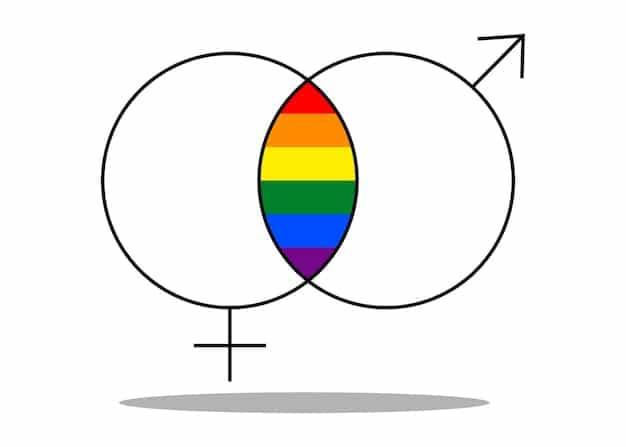Intersectionality: A Comprehensive Guide to Social Justice

Understanding the Role of Intersectionality in Addressing Social Injustice: A Comprehensive Guide, we delve into how overlapping identities like race, gender, class, and sexuality create unique experiences of discrimination, offering insights into more inclusive and effective approaches to social justice.
Dive into the complex world of intersectionality and discover how it transforms our understanding the role of intersectionality in addressing social injustice: a comprehensive guide. This guide provides a framework for recognizing and dismantling systemic inequalities experienced by individuals with intersecting identities.
What is Intersectionality?
Intersectionality is a framework that examines how various social and political identities combine to create unique modes of discrimination and privilege. It helps us understanding the role of intersectionality in addressing social injustice: a comprehensive guide by highlighting the interconnected nature of social categorizations such as race, class, gender, and sexuality.
The term was coined by Kimberlé Crenshaw, a law professor, in 1989 to describe how race, class, gender, and other individual characteristics “intersect” with one another and overlap.

The Origins of Intersectionality
The term Intersectionality was developed to address the limitations of single-axis frameworks. Kimberlé Crenshaw noticed that black women faced discrimination differently and often more intensely than white women or black men.
- Legal Context: Crenshaw’s analysis began within legal studies, examining how the law often failed to address the specific ways Black women were discriminated against.
- Single-Axis Analysis: Traditional approaches to discrimination often focused on a single identity marker, such as race or gender, failing to capture the complexity of lived experiences.
- Social Context: Intersectionality emerged from the need to understand and articulate the experiences of individuals who faced multiple forms of oppression simultaneously.
Intersectionality moves beyond simplistic categorizations to highlight the nuances of individual experiences. This framework is essential for anyone understanding the role of intersectionality in addressing social injustice: a comprehensive guide.
In essence, intersectionality underscores that our identities are not isolated but interconnected, influencing our experiences of power, privilege, and oppression.
Why is Intersectionality Important for Social Justice?
Intersectionality is crucial for social justice because it reveals how different forms of discrimination intersect and compound, affecting individuals in ways that are often overlooked. By highlighting these intersections, we can develop more inclusive and effective strategies for addressing social injustice when understanding the role of intersectionality in addressing social injustice: a comprehensive guide.
Adopting an intersectional approach ensures that social justice efforts do not inadvertently exclude or marginalize individuals with multiple marginalized identities.
Addressing Complex Inequalities
An intersectional lens allows us to see how various forms of bias—based on race, gender, class, sexual orientation, disability, and other identities—overlap and reinforce each other. For instance, a Black woman may face discrimination that neither a White woman nor a Black man would experience.
- Recognition of Multiple Identities: It acknowledges that individuals hold multiple identities that shape their experiences.
- Challenging Single-Issue Approaches: Intersectionality challenges the limitations of focusing on one form of discrimination at a time.
- Comprehensive Understanding: It provides a more comprehensive understanding of the structural inequalities that impact marginalized communities.
Intersectionality helps us recognize the nuances of discrimination and tailor our social justice efforts accordingly. This nuanced perspective is critical for anyone understanding the role of intersectionality in addressing social injustice: a comprehensive guide.
By promoting inclusivity and equity, intersectionality ensures that no one is left behind in the pursuit of social justice.
Key Components of Intersectionality
Several key components are essential for understanding the role of intersectionality in addressing social injustice: a comprehensive guide. These components include recognizing interlocking systems of power, the importance of individual experience, and the concept of matrix of domination.
By grasping these components, we can effectively apply intersectionality to analyze and address social inequalities.
Interlocking Systems of Power
Intersectionality posits that systems of power, such as racism, sexism, classism, and ableism, are interlocking and mutually reinforcing. These systems do not operate independently but rather interact to create unique forms of oppression.

- Mutual Reinforcement: These systems mutually reinforce each other, creating compounded disadvantages for individuals with intersecting marginalized identities.
- Understanding Structural Inequality: It is essential to examine how these systems operate to maintain structural inequality.
- Systemic Approach: Addressing inequality requires a systemic approach that recognizes the interconnected nature of these systems.
Understanding how these systems interlock is critical for dismantling them effectively. Intersectionality provides a framework for analyzing the complex dynamics of power and oppression.
By analyzing interlocking systems of power, intersectionality provides a more complete picture of how power operates in society.
Applying Intersectionality in Everyday Life
Understanding the role of intersectionality in addressing social injustice: a comprehensive guide not only involves theoretical knowledge but also practical application in everyday life. Applying intersectionality requires self-awareness, empathy, and a commitment to inclusive practices.
By integrating intersectionality into our daily interactions and decision-making processes, we can contribute to a more just and equitable society.
Promoting Inclusive Practices
To apply intersectionality effectively, it is essential to promote inclusive practices within communities, organizations, and institutions. This involves creating environments where individuals from diverse backgrounds feel valued, respected, and supported.
Inclusive practices should address both overt and subtle forms of discrimination, ensuring that everyone has equal opportunities to thrive.
When we understand the impact of intersectionality by understanding the role of intersectionality in addressing social injustice: a comprehensive guide, we can begin to dismantle the barriers that prevent full participation.
Benefits of an Intersectional Approach
Adopting an intersectional approach offers numerous benefits, including enhanced problem-solving, more effective advocacy, and greater inclusivity. When understanding the role of intersectionality in addressing social injustice: a comprehensive guide, we unlock the potential to create meaningful and sustainable change.
By embracing intersectionality, we can build a more just and equitable world for all.
Enhanced Problem-Solving Skills
Intersectionality enhances problem-solving skills by providing a more nuanced and comprehensive understanding of complex social issues. It allows us to identify the root causes of inequality and develop targeted solutions that address the specific needs of affected individuals.
By considering the intersecting identities of those we serve, we can create programs and policies that are more relevant and effective.
Intersectionality enables us to develop innovative solutions that promote equity and justice.
Challenges and Criticisms of Intersectionality
While intersectionality offers invaluable insights, it is not without its challenges and criticisms. Some critics argue that it can lead to excessive fragmentation or identity politics, while others raise concerns about its practical application. When understanding the role of intersectionality in addressing social injustice: a comprehensive guide, it is important to be aware of these challenges.
Nevertheless, it is important to note that these challenges are often outweighed by the benefits of an intersectional framework.
Potential for Fragmentation
One of the main criticisms of intersectionality is that it can lead to an excessive focus on individual identities, resulting in fragmentation and division within social movements.
- Identity Politics: Critics argue that prioritizing individual identities can overshadow common goals and shared interests.
- Division within Movements: Focusing too much on differences can create conflict and hinder collective action.
- Overemphasis on Difference: Some worry that it can lead to an overemphasis on difference rather than solidarity.
It is important to balance the recognition of diversity with the pursuit of shared objectives, and remember understanding the role of intersectionality in addressing social injustice: a comprehensive guide.
Avoiding these pitfalls requires a careful and inclusive approach.
| Key Point | Brief Description |
|---|---|
| 💡 Definition | Intersectionality examines overlapping identities and their impact on discrimination. |
| 🎯 Importance | Reduces inequalities by considering diverse experiences. |
| 🔑 Key Components | Interlocking systems of power and matrix of domination. |
| 🌍 Application | Promote inclusive practices and enhance problem-solving skills. |
[Frequently Asked Questions]
What is intersectionality?
▼
Intersectionality is a framework that examines how various social and political identities—such as race, gender, and class—combine to create unique modes of discrimination and privilege. This concept helps us understand the multifaceted nature of social inequities.
▼
The term was coined by Kimberlé Crenshaw in 1989 to address the failure of traditional legal systems to recognize the unique experiences of Black women, who face discrimination differently than White women or Black men.
▼
Intersectionality is crucial for social justice because it highlights how different forms of discrimination intersect and compound, affecting individuals in ways that are often overlooked by traditional approaches to equality.
▼
Applying intersectionality involves promoting inclusive practices, ensuring that all individuals are valued and respected, and understanding systemic power imbalances. It also requires self-awareness and empathy in interactions with others.
▼
Some criticisms of intersectionality include concerns about potential fragmentation and an overemphasis on identity politics, which some argue can hinder collective action. However, many view these as challenges to be navigated rather than inherent flaws.
Conclusion
In summary, understanding the role of intersectionality in addressing social injustice: a comprehensive guide offers a vital framework for recognizing and dismantling systemic inequalities. By integrating intersectionality into our approaches to social justice, we can foster more inclusive, equitable, and effective solutions for all members of society.





